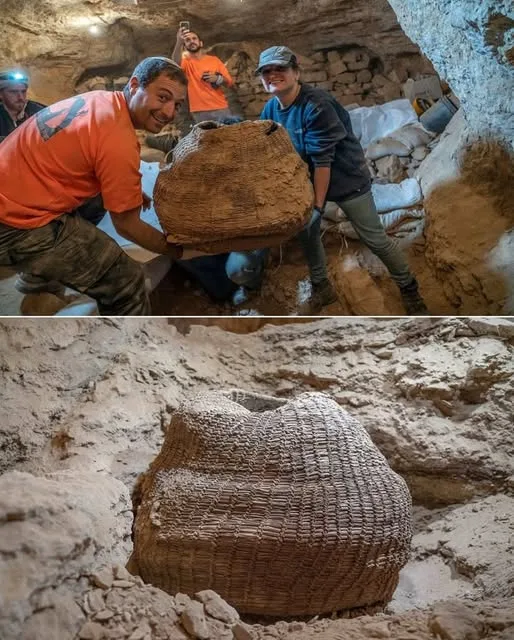World’s Oldest Woven Basket Unearthed in Israel’s Judean Desert
In a groundbreaking archaeological discovery, researchers have uncovered the world’s oldest known woven basket, dating back approximately 10,500 years, in a cave in Israel’s Judean Desert. This remarkable artifact, found during excavations, offers a rare glimpse into the lives and craftsmanship of people from the Pre-Pottery Neolithic (PPN) period, a time when human societies were transitioning from hunter-gatherer lifestyles to early agricultural communities.

A Window into the Past
The basket’s age was determined through meticulous radiocarbon dating, with samples taken from four distinct sections of the artifact. The analysis confirmed that the basket was crafted around 10,500 years ago, making it a unique relic from a pivotal era in human history. The Pre-Pottery Neolithic period, roughly spanning 9500–7000 BCE, is characterized by the development of early farming and the construction of some of the earliest known human settlements, such as Jericho.
Dr. Haim Cohen from the Department of Archeology, who was involved in the discovery, described it as “the most exciting discovery I have ever come across.” The basket, with an impressive capacity of approximately 92 liters, suggests it was used for significant storage purposes, possibly for grains, tools, or other essential goods in a burgeoning Neolithic community.
Craftsmanship and Collaboration
One of the most intriguing aspects of the find is the evidence of its creation process. Researchers have determined that the basket was woven by two individuals, with one of them being left-handed. This observation, derived from the weaving patterns, provides a rare insight into the collaborative nature of ancient craftsmanship and the individuality of the artisans involved. The basket’s intricate construction highlights the advanced skill and ingenuity of its makers, who likely spent considerable time perfecting their craft.
While the exact plant material used to create the basket remains unknown, researchers are actively investigating to identify it. Preliminary studies suggest the use of local flora available in the Judean Desert during the Neolithic period, such as reeds or grasses, but further analysis is needed to confirm this.
A Treasure from the Judean Desert
The Judean Desert, known for its arid caves that have preserved artifacts for millennia, has once again proven to be a treasure trove for archaeologists. The dry conditions of the cave where the basket was found likely contributed to its remarkable preservation, allowing modern researchers to study an object that has survived for over ten millennia.
This discovery not only underscores the technological advancements of Neolithic societies but also humanizes the people who lived during this transformative period. The basket serves as a tangible link to a time when communities were laying the foundations for settled life, agriculture, and the complex societies that would follow.
Ongoing Research and Future Insights
The discovery of the 10,500-year-old basket opens new avenues for research into the Pre-Pottery Neolithic period. Archaeologists are eager to learn more about the basket’s purpose, the materials used, and the cultural context of its creation. As Dr. Cohen noted, the ongoing investigation into the plant material could reveal more about the environment and resources available to Neolithic communities in the region.
This extraordinary find is a testament to the enduring legacy of early human ingenuity and collaboration. As research continues, the basket promises to shed further light on the daily lives, skills, and social structures of our ancient ancestors, offering a deeper understanding of the roots of human civilization.


